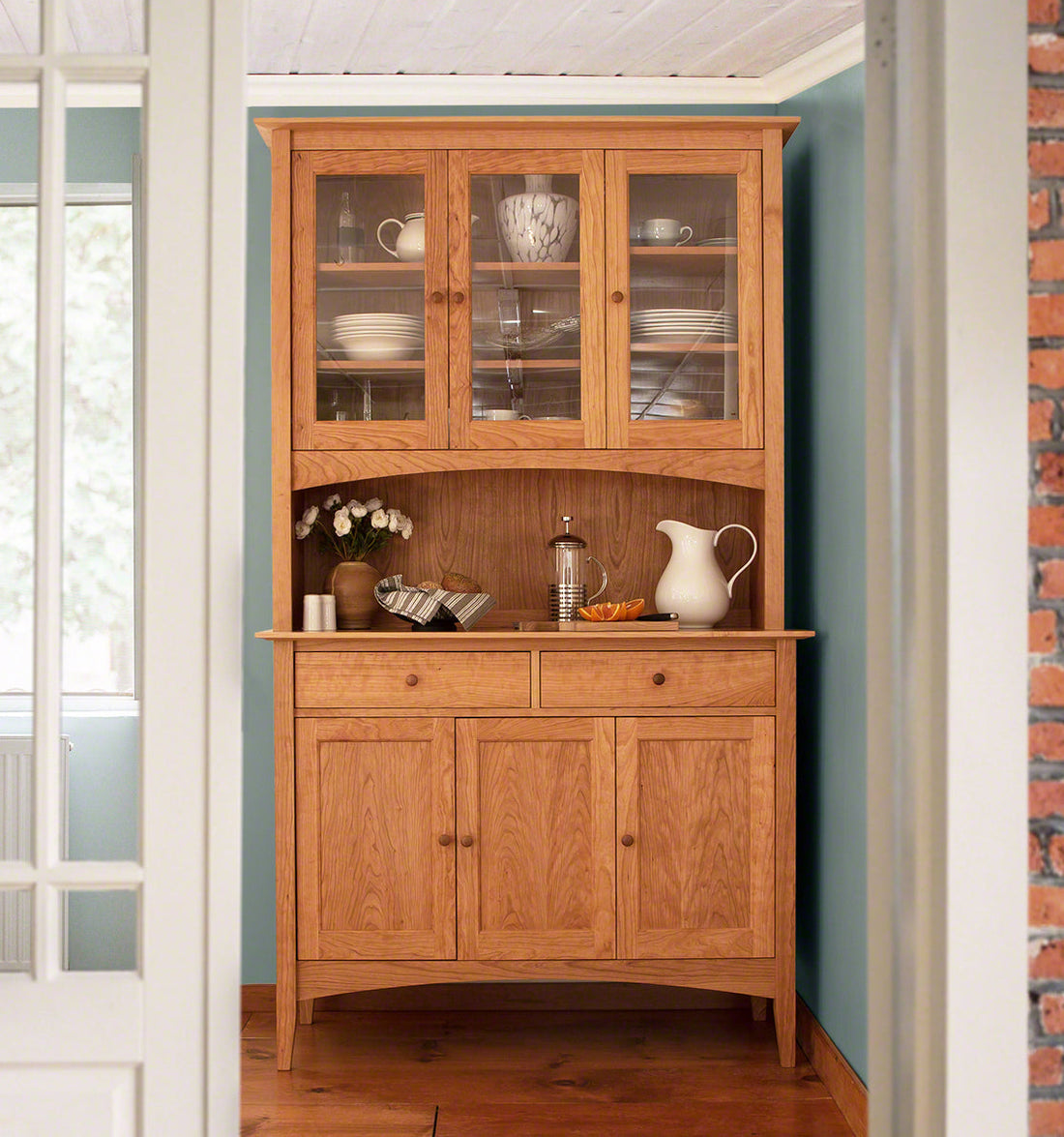Beyond their capabilities to create biodiverse ecosystems and turn greenhouse gases into clean oxygen, trees also provide one of the most versatile materials on the planet- wood. In addition to being used by carpenters and builders for framing houses, wood is perhaps most commonly used for furniture and flooring, here in the US and around the world.
When properly maintained, wood lasts a long time- generations. But part of maintaining wood means adding a finish. Using a finish on wood furniture and flooring helps modulate the humidity content of the wood. When wood dries out too much, it is prone to cracking and splitting, so it's important to seal in the appropriate moisture content.
There are lots of options for finishing wood, but when it comes to furniture and flooring, most products fall into one of these categories: oils, varnishes, polyurethanes, lacquers, and waxes.
Oil Finishes
Oil finishes are commonly used on wood furniture and kitchen utensils, and sometimes on wood floors. Generally speaking, oil finishes are eco-friendly, food-safe, and non-toxic. They’re also easy to repair and produce a more textured grain pattern than many alternatives. They tend to be considered a more traditional finish, as oils have been used as wood finishes for thousands of years.
However, oil finishes generally don’t offer the same level of protection and durability that you’d find with a lacquer or varnish. They're not as water resistant as some other finishes, and oil finishes are also more susceptible to dents and scratches because the wood doesn't have a thick hard coating on top to absorb those impacts, as a varnish or lacquer might do. Because of their poor water resistance, oil finishes are often combined with waxes to add a layer of protection.
Some of the most common oil finishes used on wood furniture and flooring are:
- Linseed Oil
- Tung Oil
- Mineral Oil
- Walnut Oil
- Teak Oil
- Hemp Oil
- Danish Oil (this is actually a trade name that applies to many different types of finishes, usually an oil and varnish blend)
Benefits of Oil Finishes:
Drawbacks:
Read more about common oil finishes for wood furniture and flooring.
Wax Finishes
Wax finishes sit on the surface of the wood and offer mild resistance to water and scratches. They're also generally susceptible to heat damage, often in the form of rings beneath a cup of hot coffee or tea. Another hindrence to waxes is that they will wear over time and necessitate periodically refinishing, as it simply gets rubbed off.
Although waxes aren't typically used in solidarity, they are frequently used in combination with oil finishes. For example, Tried & True sells a polymerized linseed oil and beeswax finish under the trade name "Original Wood Finish." Wax finishes can go overtop any other finish as an added layer of protection, but other finishes shouldn't be applied on top of a wax.
Some of the most common types of waxes used for finishing wood furniture and flooring include:
- Carnauba Wax
- Bee's Wax
- Paraffin Wax
Pros:
- Easy to apply and reapply
- Provides a gentle sheen
- Enhances tactile feel
Cons:
- Wears off over time, requiring regular maintenance
- Not heat resistant (e.g., coffee cup rings)
- Cannot be coated with other finishes
Learn more about the advantages and disadvantages to using wax as a wood finish.
Varnishes
Although "varnish" is often used as a catch-all term for wood finishes, there is actually an accepted definition for what constitutes a varnish and what doesn't. Varnish finishes are resin-based finishes that dry to a hard film that coats the surface of the wood. Varnishes are typically the most durable type of wood finish- drying to a very durable hard coat that is usually resistant to water and scratches. Traditional varnish dries to a clear finish, although most staining finish products fall into this category as well. Varnishes are popular for both indoor and outdoor use, on both furniture and floors.
Advantages of Varnish Finishes:
- High water and scratch resistance
- Long-lasting protection
- Suitable for furniture and flooring
- Available in clear or stained varieties
Read more about varnish finishes here.
Polyurethanes
Like varnishes, polyurethanes form a hard film that coats the surface of the wood. This is in contrast to oil finishes, which seep into the grain and saturate the wood. Polyurethane finishes are usually brushed onto wood and dry to a hard plastic-like film. These finishes are generally durable- scratch and water resistant, as well as low maintenance. They're very popular finishes for indoor wood flooring, and they're also used often on wood furniture.
However, poly finishes often have a yellowing effect as they age, which makes them more suited to darker woods. You probably wouldn't want to use it as a finish in an outdoor environment, as some type of varnish is usually the better choice for protecting against the elements.
There are several types of polyurethane, including oil and water based, and it's worth researching more about which of these is best suited for any given project.
Learn more about using polyurethane as a wood finish.
Lacquers
 A craftsman at Copeland Furniture applying a Greenguard Certified lacquer finish to an entertainment center.
A craftsman at Copeland Furniture applying a Greenguard Certified lacquer finish to an entertainment center.
Lacquer is a modern wood finish that is commonly used on high end furniture, but not usually on flooring. It is fast drying, impervious to water, and maintains its transparency as it ages. Lacquer finishes are popular because they don’t yellow with age, protect well against liquids, and require very little maintenance.
Lacquers are comparable to a varnish or urethane, but are usually sprayed on rather than applied with a brush or hand-rubbed cloth. Like varnish and urethanes, and in contrast to oil finishes, lacquer forms a film on top of the wood grain rather than saturating it. The use and advancement of lacquer finishes has made shellac largely irrelevant since the mid 1900’s.
There are several different types of lacquer, and although all lacquer finishes share some of the key characteristics mentioned above, there are some key differences between them as well.
Read more about lacquer as a wood finish.
Choosing the Right Wood Finish
When selecting a wood finish for your furniture or flooring, consider the following:
- Durability needs (e.g., high-traffic vs. decorative use)
- Moisture exposure (e.g., kitchens or bathrooms)
- Desired appearance (e.g., glossy vs. matte)
- Maintenance preferences
Each finish type offers unique benefits. Oils bring warmth and ease of repair; waxes add gentle beauty; varnishes and polyurethanes protect against heavy wear; and lacquers give high-end appeal without yellowing.
Whether you're restoring an heirloom table or finishing a newly installed hardwood floor, the right finish can protect your investment and enhance the natural beauty of the wood.
At Vermont Woods Studios, we believe that how a piece of furniture is made— and finished— matters. Each item we create is handcrafted by artisans local to Vermont using sustainably sourced wood and time-honored techniques. Just like choosing the right finish helps protect and preserve your furniture, our craftsmen choose materials and practices that protect and preserve the planet.


